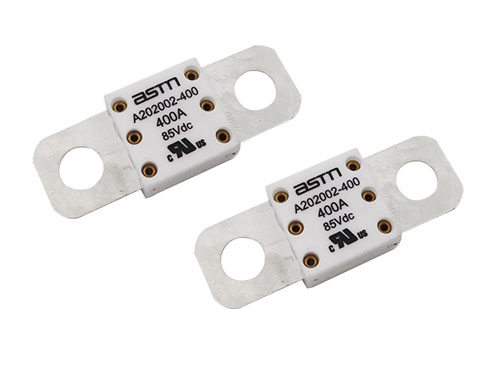What is a Self-restoring fuse
Self-restoring fuse is a kind of overcurrent electronic protection element, using high molecular organic polymer under the conditions of high pressure, high temperature, vulcanization reaction, adding conductive particle material, through a special process. The traditional fuse overcurrent protection can only be protected once and needs to be replaced when it is burned out, while the self-restoring fuse has the dual function of overcurrent overheat protection and automatic recovery.
Parameters of self-restoring fuse
1, rated voltage
Rated voltage refers to the maximum voltage that can withstand after the recovery fuse is disconnected. The voltage at both ends of the self-restoring fuse during the connection period is far less than its rated voltage, and the rated voltage is generally required to be greater than the effective circuit voltage when selecting a self-restoring fuse.
2, rated current
The rated current is the maximum current that the self-restoring fuse can work for a long time. Assuming that the protection current is Ir and the rated current of the self-restoring fuse should be selected is In, the two should meet the following conditions: In=Ir/ (fo*f1), fo is the reduction rate of the self-restoring fuse of different specifications, and no reduction rate can be added for the self-restoring fuse of ICE specification, that is, fo=1, for the self-restoring fuse of UL specification, Reduction rate fo=0.75. f1 is the reduction rate after considering the temperature, the higher the ambient temperature, the hotter the self-restoring fuse will work, and the shorter the life. It is important to note that the air temperature surrounding the self-restoring fuse should not be confused with room temperature. Whether it is UL specification or ICE specification, the requirements of self-restoring fuses are developed at room temperature 25 ° C, without considering a certain reduction rate. Obviously, different ambient temperatures, the reduction rate of self-restoring fuses is not the same. The following figure shows the reduction rate of self-restoring fuses with different characteristics at different temperatures, curve A corresponds to the glass tube self-restoring fuse (full fuse: low resolution), curve B ceramic tube self-restoring fuse (fast fuse, fast fuse self-restoring fuse and spiral wound self-restoring fuse: High resolution) curve C corresponds to polymer self-restoring fuses (self-restoring fuses made of PPTC plastic polymer).
The self-healing fuse is composed of a specially treated Polymer resin and conductive particles (CarbonBlack) distributed inside. Under normal operation, the polymer resin tightly binds the conductive particles outside the crystalline structure, forming a chain conductive electrical path. At this time, the self-restoring fuse is in a low-resistance state (a), and the heat generated by the current flowing through the self-restoring fuse on the line is small and does not change the crystal structure. When the line is short circuit or overload, the heat generated by the large current flowing through the self-restoring fuse melts the polymer resin, rapidly increases the volume, forms a high resistance state (b), and the working current is rapidly reduced, thus limiting and protecting the circuit. When the fault is removed, the self-restoring fuse is cooled and crystallized again, the volume shrinks, the conductive particles re-form the conductive path, and the self-restoring fuse is restored to a low resistance state, thus completing the protection of the circuit without manual replacement.




